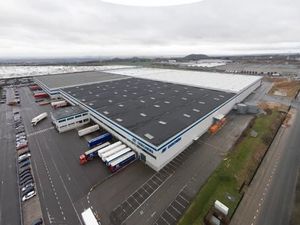4 Costs To Consider When Choosing A Distribution Center Location

The same can be said for warehouse selection. People consider the large costs like rent/price and shipping. But there are many other associated costs, or costs that may be affected indirectly that many companies fail to consider. If you're looking to open a new warehouse or distribution center plan for some degree of unpredictability. You'll never be able to predict the exact costs with 100% accuracy. But if you consider the following commonly ignored costs, you'll be a step closer to painting as complete a picture as possible.
Location
The location of a distribution center is possibly the single most influential driver of its total cost. Different locations come with different real estate values, associated shipping and labor costs, as well as taxes and regulations that may extend to your operations in other states. When deciding on the city/state your DC will call home, make sure you’re giving deep consideration to the following factors.Shipping: When selecting the location of a new distribution center, the cost of shipping to customers from said location is one of the first things considered. But what many companies fail to consider in their planning is the cost of inbound freight to their new location. Both the cost of the line haul to get your products to your DC in the first place, and the cost of having any items returned to the new location will have a significant effect on your total shipping costs. Overall, when planning for shipping costs it's important to understand what proportion of your spend is on inbound freight versus outbound.
If your sending small parcel or LTL shipments to your customers, and using a significant amount of expedited or air services, the cost savings of a location central to your customer base should greatly outweigh the added line haul of moving further way from your products manufacturer or port of entry. However, inbound freight will still be a significant cost that shouldn't be ignored in your budgeting process. Additionally, if your new DC will be receiving returns from customers you'll want to consider those costs as well. A location that subjects your return shipments to a remote/extended area surcharge may eat up a substantial portion of the savings gained by moving closer to your customer base.
If you're a wholesaler sending more regular truckload shipments to other distributors, your inbound freight costs probably make up a larger proportion of your overall spend. In this case, you want to extremely mindful of the costs of inbound freight and may find that it makes sense to opt for a location closer to your products manufacturers or port of entry rather than you customers.
Labor: Labor can account for as much as 50% of total warehouse costs, so it's safe to assume you've considered it to some degree. However, many companies make the mistake of only taking a high level estimate, such as looking at the areas minimum wage. Most locales will provide information to potential employers on the areas average wages and benefits etc. But this information may not always be 100% accurate, and assuming it is, it still shouldn’t necessarily be taken at face value.
Even if an area has an advantageous minimum wage or average wage, you need to consider workforce availability. If an area has low unemployment and high workforce participation rates you may find yourself paying a premium above historical averages or minimum wages.
Another labor related factor that must be considered is the skillset of the available workforce. An area without a workforce skilled in warehouse labor and fulfillment will mean higher training costs and, at least initially, a less efficient workforce for you. Also don’t forget about non-warehouse staff. Consider what other job functions will be fulfilled at the new location, HR, Management, Operations, Accounting, etc., and the availability of workers with those given skillsets.
Taxes: Consider the state and local taxes, both employment tax and other related taxes that you may incur from doing business in the given state. This is especially important if you're considering a state that you did not previously have any physical operations in, as you may now be subject to state sales and other taxes that did not previously apply.
Another important note here is that it may be worth your while to take bids from different cities/municipalities. Your operations probably aren't large enough to have major cities putting on a show and dance in an attempt to get your business, like we saw New York do for Amazon. However, its not uncommon for small communities in need of investment to offer tax credits or other incentives if you operation will bring even 50 to 100+ jobs.
Geography and Weather: You'll want to consider any potential hazards present in an area and how they will affect your overall costs. Is it prone to fires, earthquakes, tornados? Poor weather, storms, snow etc.? Remote, hilly or mountainous terrain? Similar factors and environmental risks will add to your insurance and transportation costs, but could have a much larger cost if they could potentially interrupt your operations.
You'll need to consider not only the occurrence of such environmental factors, but also the areas history of handling them. For example, if you're placing a DC in a major city in the midwest or along a major highway, you can expect roads to be cleared in a rather timely manor following a major snowstorm. However, if you're located in a smaller less equipped city or near less traveled highways, you may expect longer delays in such circumstances.
In Conclusion
The costs of a distribution center aren't black and white. When opening a new distribution center you'll be adding costs in some areas and finding savings in others. You'll never be able to estimate costs exactly, but if you take into account the 4 costs above when deciding on the location you'll be on track to get as complete a picture as possible.